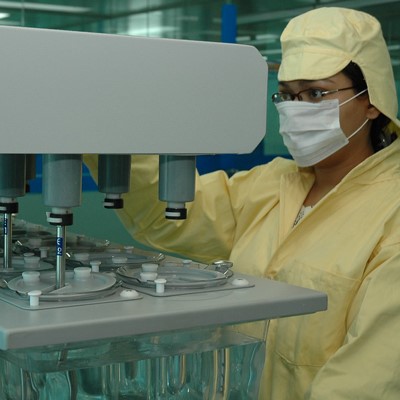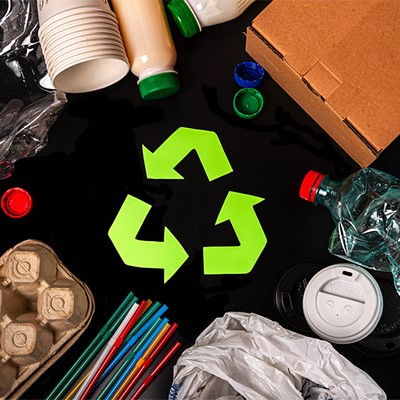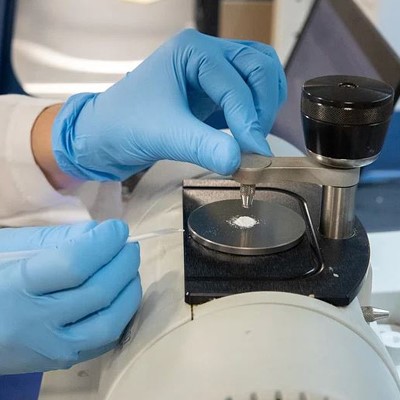
Pharmaceutical companies are actively embracing environmental sustainability, implementing green chemistry in manufacturing, adopting renewable energy sources, and reducing single-use plastics through innovative packaging solutions. Operational sustainability measures, water conservation, and industry collaborations further highlight the industry's commitment to reducing its environmental impact and establishing sustainable practices

In an age where global environmental sustainability is imperative, various industries are reassessing their practices to diminish their ecological impact. The pharmaceutical sector, a crucial component of healthcare, is no different. This article explores the proactive steps taken by pharmaceutical companies to incorporate sustainability into manufacturing, packaging, and operations, to lessen their environmental footprint.
I. Sustainable Manufacturing Practices:
A. Green Chemistry Initiatives:

In the realm of sustainable manufacturing practices, pharmaceutical companies are demonstrating a growing commitment to green chemistry principles. This strategic shift underscores a conscious effort to prioritize environmentally friendly raw materials and processes throughout the drug manufacturing lifecycle. By opting for greener alternatives, companies aim to reduce the ecological impact of their operations while promoting responsible resource utilization.
Specific examples abound of innovative applications of green chemistry in drug manufacturing, with success stories highlighting the feasibility and benefits of this approach. From the adoption of bio-based solvents to the reduction of hazardous by-products, these initiatives showcase the industry's dedication to fostering a more sustainable and ecologically responsible future. As pharmaceutical manufacturers continue to embrace green chemistry, they not only contribute to the broader environmental sustainability movement but also set new benchmarks for ethical and eco-conscious practices within the sector.
B. Energy Efficiency and Renewable Energy Sources:

The pharmaceutical industry is undergoing a substantial transformation in its stance on energy consumption, placing a robust emphasis on enhancing efficiency and integrating renewable energy sources into manufacturing. This shift is a direct response to the industry's dedication to minimizing its carbon footprint and embracing sustainability. An examination of this trend highlights a unified effort among pharmaceutical production facilities to adopt energy-efficient technologies and practices. Companies are actively investing in cutting-edge innovations to optimize energy utilization, ranging from streamlined equipment to advanced automation systems.
At the same time, there is a growing momentum in pharmaceutical manufacturing facilities towards integrating renewable energy sources like solar and wind power. Case studies in this regard offer valuable insights into the advantages and challenges linked with these sustainable practices. Enhanced energy efficiency not only results in cost savings but also aligns with worldwide environmental objectives. Nevertheless, challenges such as initial investment costs and integration complexities emphasize the necessity for a thorough and strategic approach. As pharmaceutical companies navigate through this transition, they play a role in the broader shift towards greener and more sustainable operations within the industry.
A. Reducing Single-Use Plastics:

Pharmaceutical companies are increasingly taking proactive measures to address the environmental impact of packaging, particularly in tackling the pervasive issue of single-use plastics. This imperative reflects a broader commitment to sustainable practices within the industry. In response, companies are exploring alternative packaging materials that are not only eco-friendly but also effective in preserving the integrity of pharmaceutical products.
Initiatives range from adopting biodegradable and compostable materials to utilizing recycled content in packaging. Recycling programs are being implemented to ensure the responsible disposal and reuse of packaging materials, contributing to a circular economy.
Moreover, initiatives to reduce packaging waste encompass inventive design strategies that prioritize efficiency without jeopardizing product safety. As pharmaceutical manufacturers navigate the intricate terrain of sustainable packaging, these efforts highlight the industry's dedication to diminishing its environmental impact and promoting a more responsible approach to material usage across the supply chain.
B. Biodegradable Packaging Innovations:

The pharmaceutical industry is witnessing a wave of innovation in the realm of packaging, particularly with a focus on biodegradable materials. This emphasis on biodegradability stems from a collective commitment to reducing environmental impact and embracing sustainable practices. Recent advancements in biodegradable packaging materials for pharmaceutical products showcase a range of novel solutions. These materials, derived from plant-based sources or biopolymers, offer a promising alternative to traditional packaging.
By choosing materials that naturally break down over time, pharmaceutical companies contribute to mitigating the persistence of non-biodegradable waste in landfills. These innovations represent a crucial step forward in the industry's efforts to align with global sustainability goals and reinforce a responsible approach to packaging throughout the product lifecycle.
A. Waste Reduction and Recycling Programs:

Pharmaceutical companies are strategically addressing operational sustainability by implementing comprehensive waste reduction and recycling programs. These initiatives are designed to minimize waste generation throughout the various stages of pharmaceutical production and operational processes. Companies are adopting recycling programs that target specific waste streams, aiming to repurpose materials and reduce the overall environmental impact.
Waste-to-energy initiatives are integral to operational sustainability, with companies exploring innovative technologies to transform waste materials into energy. This contributes to both waste reduction and increased energy efficiency. Additionally, there is a growing emphasis on tackling waste at its source by integrating sustainable practices into production methods to inherently minimize waste creation. Through the adoption of these strategies, pharmaceutical companies not only contribute to environmental conservation but also align with global sustainability goals, showcasing a commitment to responsible and eco-conscious operational practices.
B. Water Conservation Measures:

In response to the escalating global concerns about water scarcity and sustainability, pharmaceutical companies are actively engaging in water conservation practices within their manufacturing and operational frameworks. Recognizing the pivotal role of water stewardship in sustainable business practices, companies are directing investments toward the development and implementation of advanced technologies and processes aimed at minimizing water consumption. These initiatives encompass the adoption of water-efficient manufacturing techniques, recycling and reuse systems, and the integration of innovative technologies to optimize water usage throughout the production cycle.
By giving priority to responsible water stewardship, pharmaceutical companies contribute not only to environmental conservation but also align with expectations from regulatory bodies and society for sustainable business practices. Embracing these water conservation measures marks a substantial move by the industry to reduce its environmental impact and promote a more sustainable and resilient future.
A. Pharmaceutical Industry Sustainability Initiatives:

The pharmaceutical industry is undergoing a paradigm shift towards sustainability, with an increasing focus on collaborative efforts to establish industry-wide standards and benchmarks. Recognizing the collective responsibility to address environmental challenges, pharmaceutical companies are engaging in collaborative initiatives that extend beyond individual corporate boundaries. This section delves into the collaborative endeavors within the pharmaceutical sector aimed at formulating and implementing sustainability standards. These initiatives often involve partnerships with industry associations, regulatory bodies, and non-governmental organizations, fostering a unified approach to sustainable practices across the entire value chain.
Through the consolidation of resources, the exchange of best practices, and the joint establishment of benchmarks, these collaborations strive to instigate significant change and enhance the overall sustainability performance of the pharmaceutical industry. Such collective sustainability initiatives not only showcase the sector's dedication to environmental responsibility but also lay the foundation for a more resilient and sustainable future for the entire industry.
B. Regulatory Compliance and Reporting:

As sustainability becomes a focal point for the pharmaceutical industry, companies are navigating the complex landscape of regulatory compliance and reporting to align their environmental efforts with evolving standards. This involves a meticulous examination of reporting frameworks that guide companies in disclosing their sustainability practices transparently. Pharmaceutical firms are grappling with compliance challenges as they endeavor to meet the increasingly stringent environmental regulations imposed by authorities. This section explores the strategies employed by these companies to address compliance hurdles, whether they be related to data collection, verification processes, or meeting ambitious sustainability targets.
Moreover, it explores the changing role of regulatory bodies, illustrating how these entities actively promote and shape environmental sustainability in the pharmaceutical sector. The collaborative interaction between pharmaceutical companies and regulatory bodies is crucial not only for ensuring compliance with environmental standards but also for fostering ongoing improvement and innovation in sustainable practices within the industry.
As the pharmaceutical industry takes significant strides toward environmental sustainability, it becomes evident that this shift is not just a trend but a fundamental transformation. This article has explored the multifaceted approach adopted by pharmaceutical companies, emphasizing sustainable manufacturing, eco-friendly packaging, and operational efficiency. As these initiatives become more widespread, the industry is poised to not only reduce its environmental impact but also set new benchmarks for corporate responsibility in the pursuit of a greener future.